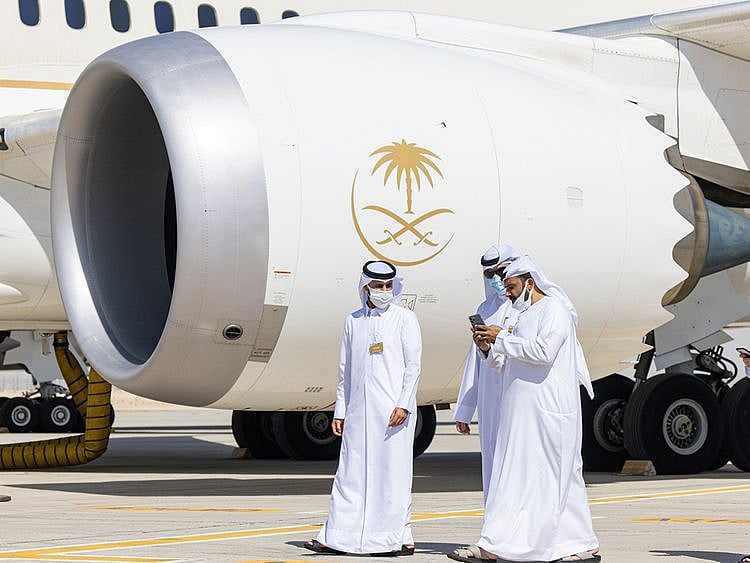Saudi Arabia goes for a ‘dual-hub’ airline strategy as it targets 330m passengers by 2030
Saudi wealth fund PIF will own the new airline as Kingdom seeks major lift in tourists

Dubai: Saudi Arabia’s new national airline will be key to the Kingdom’s plan to become a regional aviation hub. By 2030, Saudi Arabia is planning to boost its airports’ capacity to handle 330 million passengers, compared to around 100 million passengers right now. The Gulf country, which is looking to diversify away from oil exports, will also have flights to around 250 destinations – it has about 100 destinations now.
At the center of the plan is a ‘dual-hub’ strategy where current flagship carrier Saudia will operate out of Jeddah, while the new airline will have its base in Riyadh, the country’s capital, and commercial center.
“The pie is so big, and the required growth is so significant that it could be challenging for one airline to absorb all of that growth,” said Mohammed Alkhuraisi, Head of Strategy at the General Authority for Civil Aviation (GACA), Saudi Arabia’s aviation regulator.
Saudia, which is in the midst of a turnaround, will become profitable this year or latest by early 2023, its CEO Ibrahim Koshy said during an industry event last week. The airline was previously targeting 2024 for a return to profitability. “We are asking Saudia to transform and build a true hub out of Jeddah,” said Alkhuraisi. “Jeddah is the gateway to the two holy mosques and the Red Sea line, while Riyadh is the business hub, and it requires different products.”
The new airline is being launched by Saudi Arabia’s sovereign wealth fund, PIF (Public Investment Fund). “The plans of the new airline in terms of operationalization, incorporating the company, naming and launch date are all within PIF jurisdiction - as far as we know, the plans are moving, but the details are with PIF,” said Alkhuraisi.
Boosting transit traffic
Saudi Arabia is planning to increase transit traffic to 30 million by 2030 – the country’s airports handled around 3 million transit passengers in 2019. “That’s almost ten times the transit volume we had in 2019, but our main focus is to increase the number of arrivals that come to the Kingdom,” said Alkhuraisi.
Saudi Arabia, which aims to have 100 million tourists every year by 2030, is investing heavily in its tourism sector. Some ‘giga-projects’ include an investment of $500 billion into Neom, a futuristic city designed to be sustainable; a $10 billion investment into an entertainment project called Qiddiyah Project; and the Red Sea Project which will feature 90 islands.
“Saudi Arabia’s successful aviation and tourism sector will have a spillover effect on Qatar, UAE, Turkey and the whole region,” said Alkhuraisi.
Covid recovery
The GACA official said Saudi Arabia’s domestic market numbers are getting close to pre-pandemic levels. But, ramping up capacity to meet this demand has not been that easy. “We need to ensure the industry has the capacity that we lost during COVID, so we are working with all the carriers and airports - we are making sure that we have everything from a regulatory point of view,” said Alkhuraisi.
High oil prices
The aviation official called high oil prices ‘cyclical’ and said Saudi airlines had been resilient to such shocks in the past. He added that GACA can play a role in helping airlines cope with the costs by bringing down airport charges and other tariffs. The Russia-Ukraine conflict has taken crude oil beyond $100 a barrel and this is putting more pressure on airlines, who are looking to ramp up flights to meet the pent-up travel demand. Fuel represents around 30-45 per cent of an airline’s operational expenses.
Alkhuraisi was speaking on the sidelines of the Future Aviation Forum in Riyadh, where CEOs, government officials and regulators gathered to discuss the evolution of international air travel.
Big shift
“With the new national carrier, Saudi Arabia plans to target international transit passenger traffic, going head-to-head with regional giants like Emirates, Qatar Airways and Turkish Airlines, and opening up a new front in simmering regional competition,” said Linus Benjamin Bauer, MD of Bauer Aviation advisory.
Bauer said the new strategy marks a shift for Saudi Arabia whose current airlines mostly operate domestic services and point-to-point flights. “The Kingdom's large population generates direct traffic that could cushion losses as the new national carrier targets international transit traffic - in addition to international direct flights to and from the Kingdom.”
Soft power
Large flagship carriers can often be a source of soft power for countries on a global stage.
“Over the last few decades, various governments in Asia and the Middle East have pursued a soft power approach to foreign affairs,” said Bauer. “Their national carriers have been a pillar of the countries' strategy to improve relations, build new ties across the world, and promote trade and tourism.”
Sign up for the Daily Briefing
Get the latest news and updates straight to your inbox
Network Links
GN StoreDownload our app
© Al Nisr Publishing LLC 2025. All rights reserved.